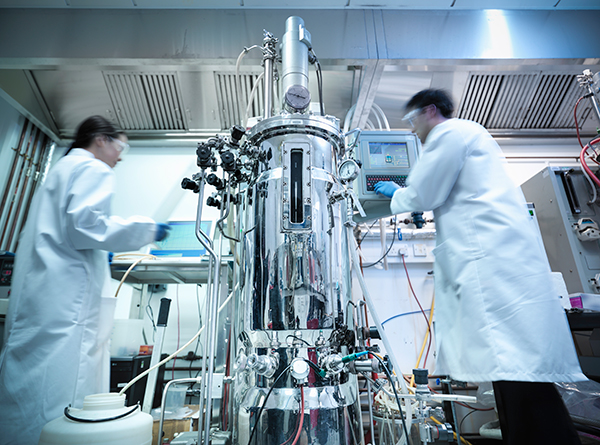Viable cell count (VCC), a critical parameter in both microbial and mammalian cell cultures, fluctuates during batch and fed-batch cultures. VCC is determined conventionally through sampling and offline analysis, which introduces the usual issues related to contamination, elapsed assay time, temporal relevance, and to a lesser degree the resources required to determine VCCs.
Thus more-than-typical interest in inline capacitance probes, which distinguish living cells from “everything else” by the capacitance changes objects induce in the probe as they interact with it. On the downside these probes have difficulty distinguishing different cell populations.
Those are the engineering hurdles. Operationally, there are also issues of off-, at-, and in-line measurements and how to maximize each one’s benefits in a fully-validated cGMP environment.
Three years ago, Biogen published a method, using capacitance sensors from Aber Instruments, for correlating “online” (also known as inline) capacitance VCC values with much easier-to-obtain at-line measurements. At/in-line measurements are also easier to integrate with bioreactors.
Systematic differences
The Biogen group found systematic differences that they turned into a correction factor that worked throughout the measurement range. The authors also developed a cell-like standard for VCC instrument calibration, and claimed their results “support use of capacitance for process control in large-scale mammalian cell culture.”
Aditya Bhat, PhD, vice president for technology at Aber, explains that this project was just the beginning.
“Today, Biogen uses raw capacitance for a variety of applications in manufacturing, including feed of complex nutrients, real time troubleshooting, n-1 seed transfer, process fingerprinting, and others,” Bhat tells GEN.
Capacitance technology enables near-real-time continuous measurement (measurements are taken once every four seconds).
“This allows for easy integration for automated control of, for example, feed and bleed strategies for process intensification, according to Bhat. “Aber’s sensors operate through multiple communication protocols (USB, current loops, modbus TCP, modbus RTU, profibus, profinet) to make this exercise even more straightforward and available.”
The true test of a technology is how widespread, and how quickly, bioprocessors adopt it. Moreover innovation tends to occur more frequently with new projects, molecules, or facilities than through retrofits. When asked about adoption of capacitance sensors Aditya notes that “quite a few big biopharma companies utilize capacitance for VCC in cGMP environments but, understandably, not every company wishes to publicize these developments.”


